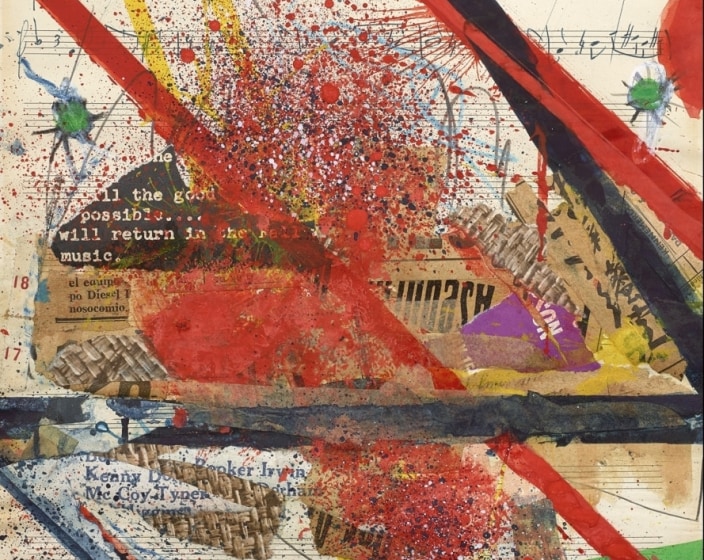
Manoucher Yektai's (1921-2019) artistic journey has spanned multiple cultures, shaping his unique perspective as an artist. Born in Iran, he navigated the limitations of artistic expression under Islamic strictures, which fueled his desire for creative freedom. At 22, he moved to France, seeking the artistic liberation offered by the renowned School of Paris. In the late 1940s, Yektai moved to New York, a pivotal moment as it marked the emergence of the New York School and Abstract Expressionism. His early shows received critical acclaim, and he became associated with prominent artists, including Mark Rothko, Jackson Pollock, Philip Guston. Franz Kline, Willem de Kooning, and Robert Motherwell.
Despite being labeled as an Abstract Expressionist, Yektai maintained his own artistic identity, incorporating residual figuration into his abstract works. He believed in the dignity of human life and celebrated the beauty found in everyday forms. Yektai's artistic practice is a fusion of his Persian roots and experiences in Western art. As a traditional Persian poet, his modern-free verse poems, published for an Iranian audience, reflect a sense of mysticism reminiscent of Rumi. Simultaneously, he embraced American Modernist painting, particularly the absolute freedom of expression in Action Painting.
Yektai's artistic style evolved over the years, reflecting his exploration of the interplay between abstraction and representation. His paintings from the 1950s showcased a balance between abstraction and the celebration of paint as a material. In the late 1950s, he embarked on a series of "action portraits," merging the impulsive techniques of Action Painting with the studied tradition of portraiture. As the cultural atmosphere shifted in the 1960s, Yektai's art embraced a synthesis of figuration and abstraction. His works demonstrated a profound engagement with the subject matter and the aliveness of space. He explored the tension between surface and depth, combining gestural abstraction with residual illusory elements inspired by everyday life. Yektai's artistic trajectory diverged from the mini-movements of the post-modernist era, and he developed his own unique synthesis of the Schools of Paris and New York. His paintings, characterized by intensely worked surfaces and a blend of thick and thin layers, displayed a mastery of the material and a celebration of the richness of paint.
Throughout his career, Yektai's art has been compared to the works of renowned artists such as Henri Matisse, Hans Hofmann, and Richard Diebenkorn. His landscapes, which gained prominence in the 1970s, showcased his ability to rapidly deconstruct and reconstruct subject matter while maintaining a sense of coherence. Manoucher Yektai's art is a testament to his unwavering commitment to his artistic vision, rooted in his Persian heritage and influenced by the diverse cultures he encountered. His works embody a harmonious synthesis of abstraction and representation, capturing the essence of human existence and the ever-changing nature of the world.
His works can be found in the permanent collections at the Metropolitan Museum of Art, New York; MoMA, New York; Whitney Museum of American Art, New York; Hirshhorn Museum and Sculpture Garden, Washington, D.C.; SFMOMA, San Francisco, CA; and the Tehran Museum of Contemporary Art, Iran.